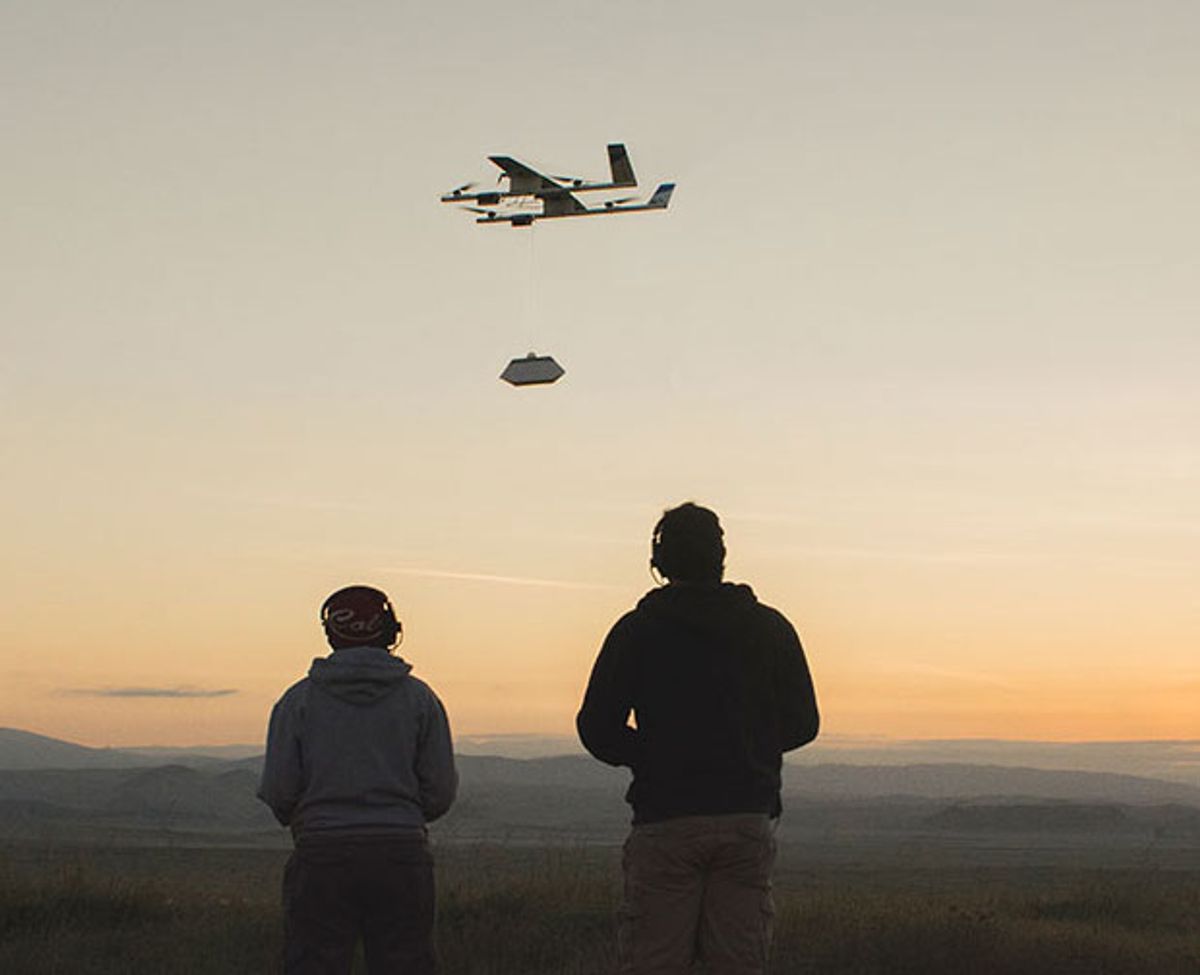Okay Google, I give up. I honestly have no idea what you’re trying to “moonshot” with Project Wing. A couple of weeks ago, X, the experimental technology lab that is part of Alphabet, Google’s parent company, posted a new video about their delivery drone effort that, if anything, manages to make things look less exciting.
From my perspective (as a journalist who has to watch a vast number of videos like this), this falls under the category of overly inspirational “delivery drones will change the world” marketing material. It makes a lot of grandiose statements but doesn’t show a lot of tangible progress. The website is not much better:
“Breathe in the car exhaust. Hear the truck engine idling. Feel the weight of city congestion. Now look up. See all that open sky? What if we could use the air to move anything from where it is to where it’s needed – quickly, reliably and with a much lower carbon footprint than today’s transportation?
At Project Wing we’re building the next generation of automated aircraft, and working toward the day when these vehicles deliver everything from consumer goods to emergency medicine—a new commerce system that opens up universal access to the sky.”
So X is focusing on how to make an efficient and versatile drone for vertical take-off and landing (VTOL) cargo hauling. That’s cool, sure, but other people have been doing the same or similar things. So what we’re wondering is, where, exactly, is that X “moonshot”? Where’s the crazy idea that would be a massive investment and a huge risk, but comes with a potential payoff that would bring us The Future?
Besides the airframe, the Project Wing website also highlights work that X is doing on air-traffic management for drones. Again, this is an important problem to solve, but it’s not something that X is uniquely qualified to do. It’s a collaborative and slow-moving effort that necessarily involves a bunch of companies and several different government agencies, with not a whole lot that X can do by itself to moonshotify it.
Urban drone delivery certainly has a lot of hard technical problems that do need a concerted effort by a lot of smart people to solve. Most of them are related to autonomous navigation, sensing, and obstacle avoidance. Even DARPA, which defines itself through high-risk, high-reward programs, is trying to help push the state of the art forward through its Fast Lightweight Autonomy (FLA) program. But if X’s plan is to tackle delivery drones with the same ambition as it tackled autonomous cars after the DARPA challenges, that’s not clear from their videos and website.
If you are a regular reader of this blog, you probably know that I end up ranting about delivery drones anytime anyone posts a video with a lot of hype and not a lot of tech. The problem, as I see it, is that all of these big companies seem to be spending enormous amounts of time and energy on platform design and aerodynamic optimization and different ways of dangling packages from drones on strings. Meanwhile, a couple guys at a startup called Skydio (to highlight just one example) have one of the least aerodynamic drones I’ve ever seen but which can avoid trees all by itself. Isn’t that a bigger contribution towards “a new commerce system that opens up universal access to the sky”?
Some experts that we’ve talked to have suggested that the most likely near-term solution to the urban drone autonomy problem is to just kick the can down the road a bit and use humans instead. It’s possible that X is focusing on airframe design and not autonomy because they’re planning on having remote human pilots do all the tricky stuff, which would probably work just fine. It’ll be crazy expensive, and we’ve never been entirely convinced about the economics of urban drone delivery anyway, but after all this hype, cost seems unlikely to be the thing that stops a pilot program (as it were).
My goal here is not to bash on X; they do some amazing things in robotics. But because they have this reputation for amazingness, and because we’re so used to seeing them try crazy new things, Project Wing (as it is currently being publically presented) seems more like a slow commercialization grind than an exciting moonshot. Maybe that’s how X wants to do things now (that seems to be the case with their robotics program, for instance). I desperately want them to make this into a true moonshot, to find a way to solve these hard problems. It’s been a while, though, and I wonder how many more years we’ll have to wait.
[ Project Wing ]
Evan Ackerman is a senior editor at IEEE Spectrum. Since 2007, he has written over 6,000 articles on robotics and technology. He has a degree in Martian geology and is excellent at playing bagpipes.



